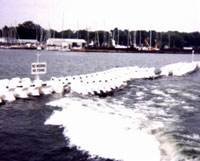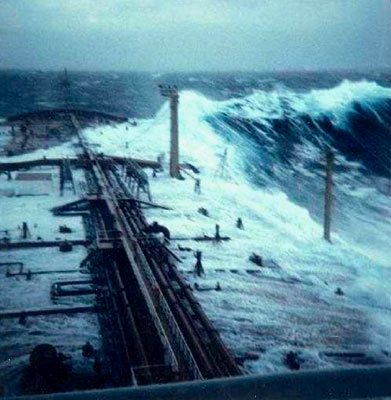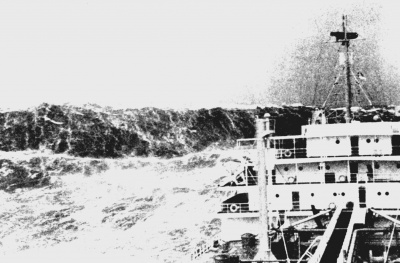Waves
- Excellent resource: WikiWaves
- Some background on ocean surface waves and also waves for oceanographers
- More background here.
- A lot of math on breakwaters at artificialreefs.org.
- Floating breakwaters by WhisprWave.
- Clickets
- Opening and closing tubes
- A moored device (Patent)
- A lot more patents at FreePatentsOnline (free registration required to see pictures)
- Wikipedia Sea state - standard classifications for wave state
- Beaufort scale - scale for wind and waves
Describing Waves
During the service life of an offshore structure, it will experience a huge number of waves, from very small wavelets to possibly giant waves. A practical way to describe these unceasingly changing waves
is to divide them into various categories (sea states), and use short-term wave statistics to depict each sea state and long-term wave statistics, usually in the form of a wave scatter diagram and rosette, to delineate the rate at which a sea state occurs.
In a similar way, there are two levels in the description of wave directionality, i.e., wave directional spectrum or wave spreading for short-term, and wave rosette for long-term, respectively.
See Section 3 of ABS GUIDANCE NOTES ON SPECTRAL-BASED FATIGUE ANALYSIS FOR FLOATING OFFSHORE STRUCTURES . 2005 for further discussion of Wave measurement.
Rogue Waves
"There really is no such thing as a rogue wave. These larger than normal seas are the result of two wave trains coinciding at just the right moment for their energy to combine. When this happens the higher-than-normal crest is exposed to more wind force and absorbs additional energy. And if the wave happens to be unstable and breaks - because the rotating particles within the wave can no longer make it over the top - there will be a large mass of water falling downhill."
From "Surviving the Storm" by Steve & Linda Dashew, page 241.
See also
- Rogue waves
| Ocean Environment |
|---|
| General · Waves · Sea state · Currents · Wind · Politics · Piracy · Biofouling |


